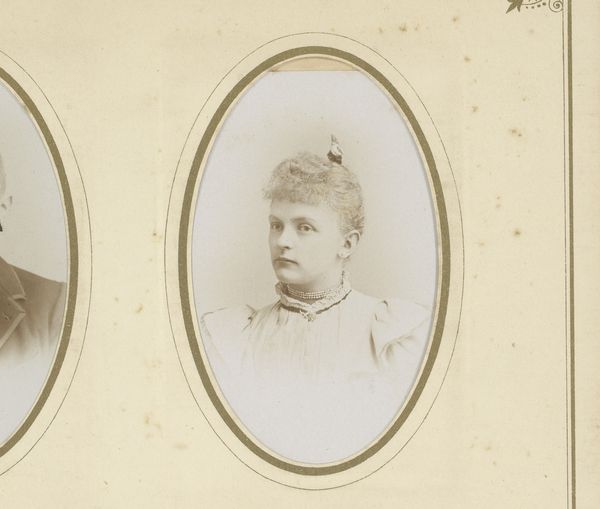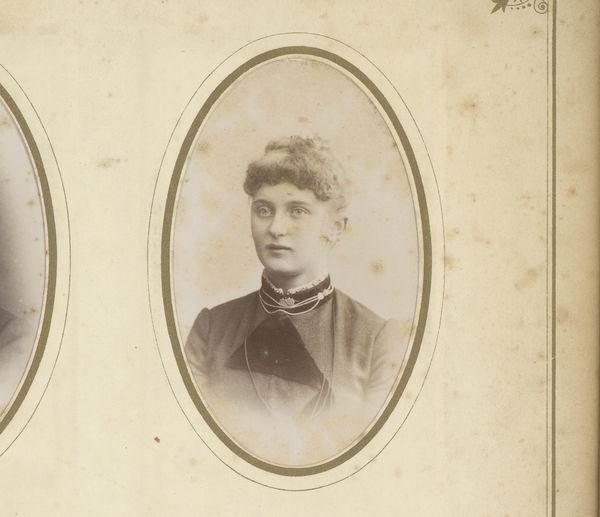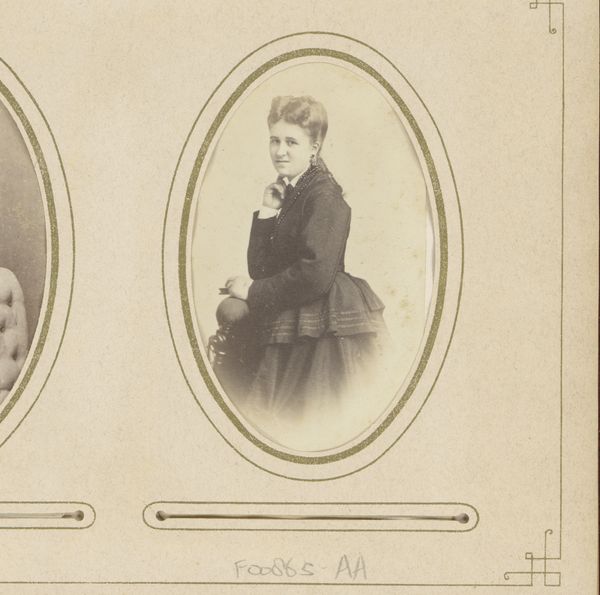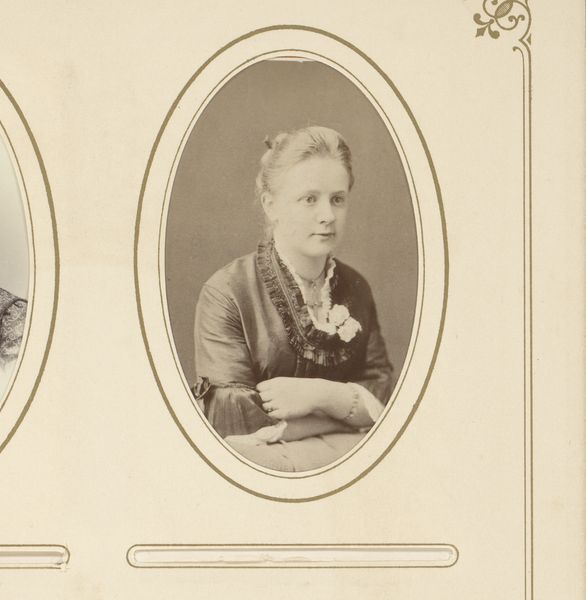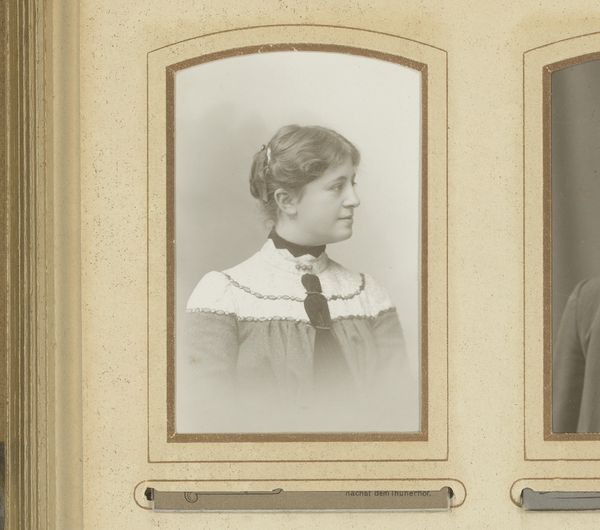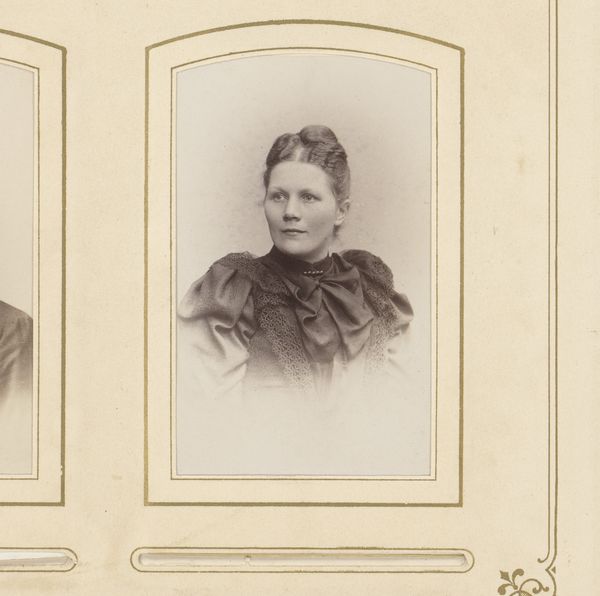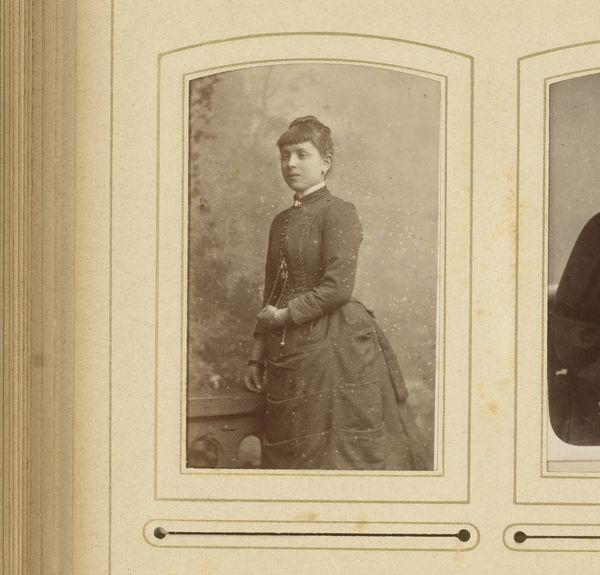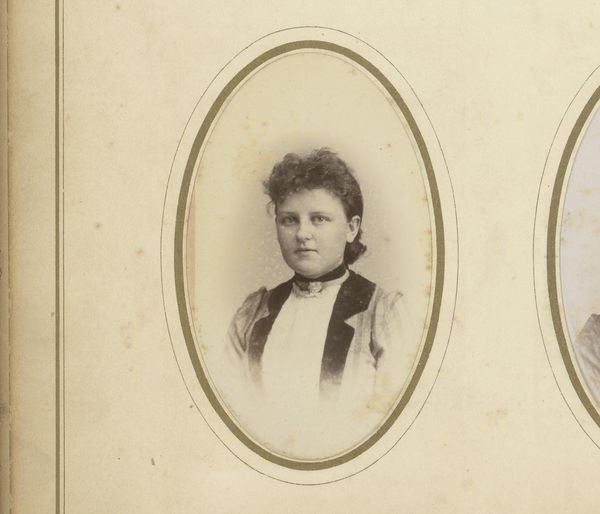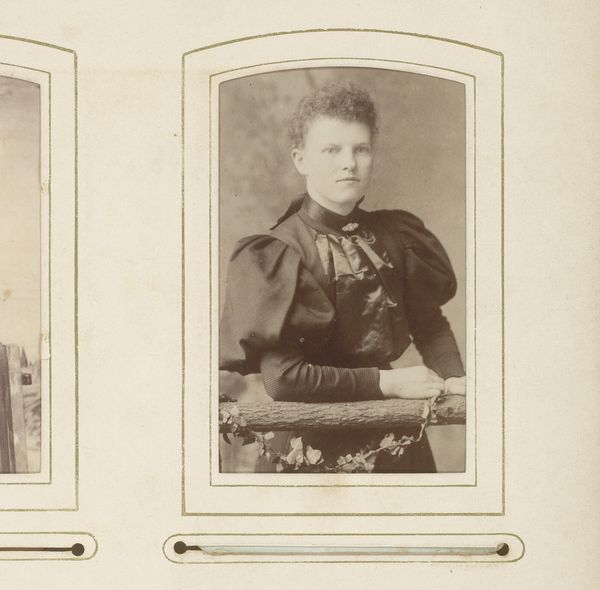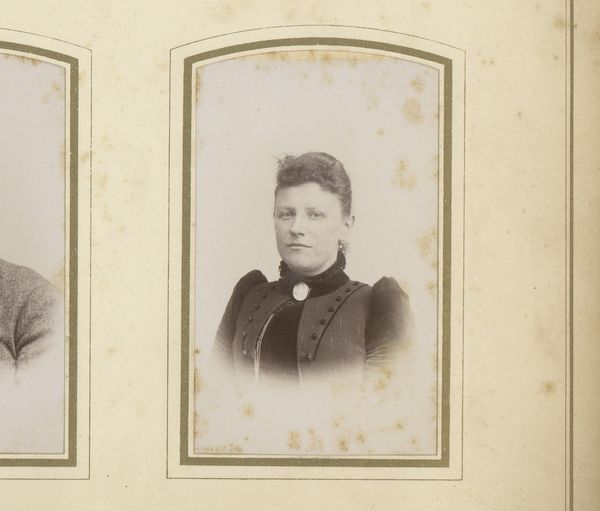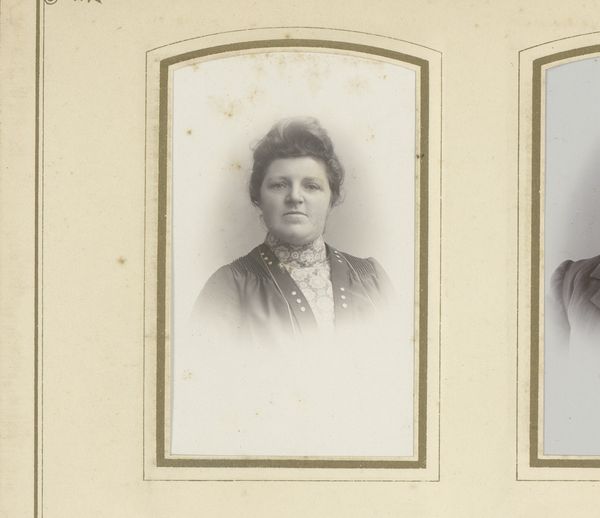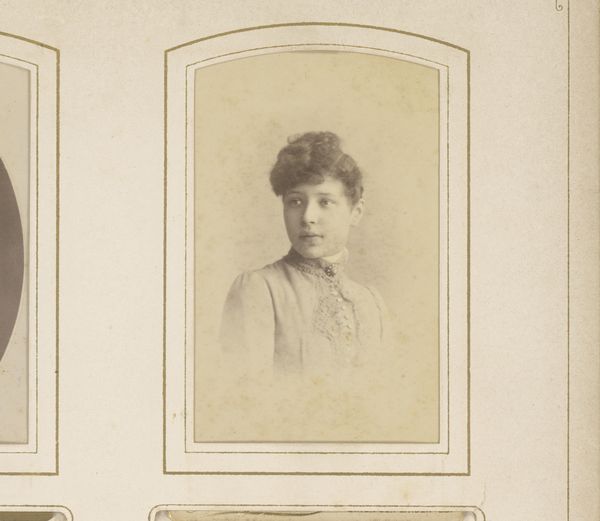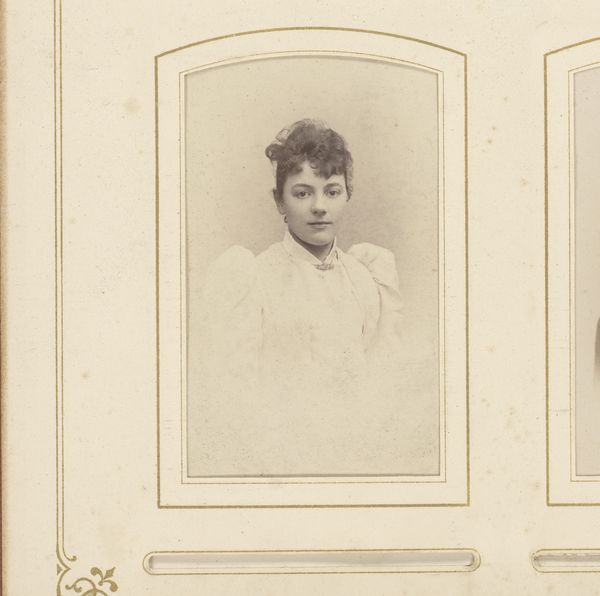
#
aged paper
#
toned paper
#
vintage
#
photo restoration
#
parchment
#
historical photography
#
old-timey
#
yellow element
#
19th century
#
gold element
Dimensions: height 85 mm, width 51 mm
Copyright: Rijks Museum: Open Domain
Curator: Let’s consider this photographic portrait, "Portret van een jongen," made between 1862 and 1867 by Louis Oskar Grienwaldt. Editor: My first thought is the delicacy. Despite the stiffness typical of the era, the subtle tones and textured paper give it an unexpectedly soft feel. Curator: Absolutely. This piece exists within a specific historical context. Photography in the mid-19th century was becoming more accessible, leading to a rise in portraiture among the middle classes. This image is less about artistic innovation, and more a record of social mobility and status. Editor: I’m drawn to the details of the clothing. The high collar and decorative trim on the garment suggest a level of craftsmanship, the sort of meticulous needlework produced by women in the domestic sphere at the time. This gives us clues about not only aesthetics, but also the social relations of production. Curator: Good point. Photography played a significant role in shaping societal norms and ideals. Images like this presented curated versions of reality, reinforcing conventional notions of respectability and decorum through very controlled representations. Editor: I agree. There is the artifice of the setup in play but there's also that intriguing yellowing of the paper. It transforms a document meant to record a moment and places the photograph back in time as an object, creating another texture— the texture of time. Curator: It makes you wonder about the original owner. How often was it looked at, handled? What was their life like? That yellowing certainly transforms our experience. Editor: Definitely. Thinking about what still resonates with viewers speaks to photography’s enduring ability to merge personal narratives with larger cultural currents. Curator: I think you're right. It encourages one to consider the intersections of portraiture, societal expectations, and changing technologies within the medium's early history.
Comments
No comments
Be the first to comment and join the conversation on the ultimate creative platform.
